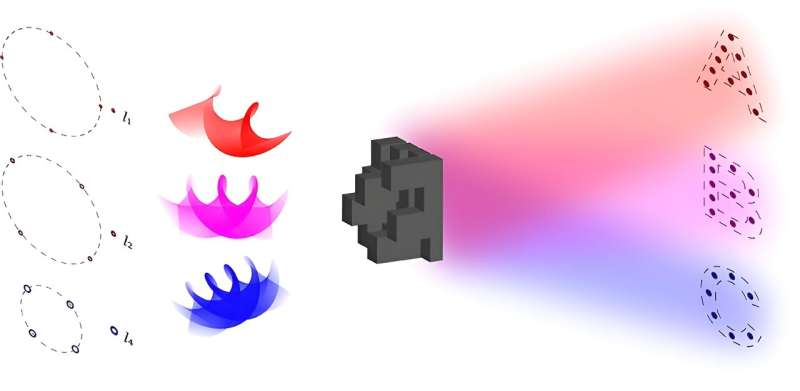This article has been reviewed according to Science X's editorial process and policies. Editors have highlighted the following attributes while ensuring the content's credibility:
fact-checked
trusted source
proofread
New technique uses optical orbital angular momentum lattice to enhance information storage capacity

In the realm of optical holography, the conventional limitations of polarization, wavelength, and incident angle are giving way to a new era of possibilities. A breakthrough technique known as optical orbital angular momentum (OAM) multiplexing has emerged, offering a plethora of unique mode channels for data storage, 3D printing, artificial intelligence, and optical tweezers. Yet, there's a hunger for more storage capacity, which propels ongoing research.
Professor Xiaocong Yuan and his team at Shenzhen University have developed a cutting-edge approach: orbital angular momentum lattice (OAML) multiplexed holography. Introducing a vortex lattice (VL) beam with two added parameters contributing azimuthally and radially, they unlock supplementary encrypted dimensions, enhancing storage capacity.
Published in Advanced Photonics Nexus, this research sparks a paradigm shift in holographic systems.
Compared with conventional OAM holography, OAML holography uses the VL beam configuration to supply independent information carriers, adding two supplementary encrypted dimensions. By manipulating the rotation angle of the vortex lattice and the lattice's dimensions, this innovative approach significantly boosts storage capacity, overcoming the limitations of traditional methods.
This research breakthrough not only enhances information storage capacity but also introduces novel approaches for implementing high-capacity holographic systems. The significance of this advancement holds crucial value and significance particularly in fields such as information encryption and storage, promising a future where holography transcends its current limitations.
More information: Tian Xia et al, Multidimensional multiplexing holography based on optical orbital angular momentum lattice multiplexing, Advanced Photonics Nexus (2024). DOI: 10.1117/1.APN.3.1.016005
Provided by SPIE




















